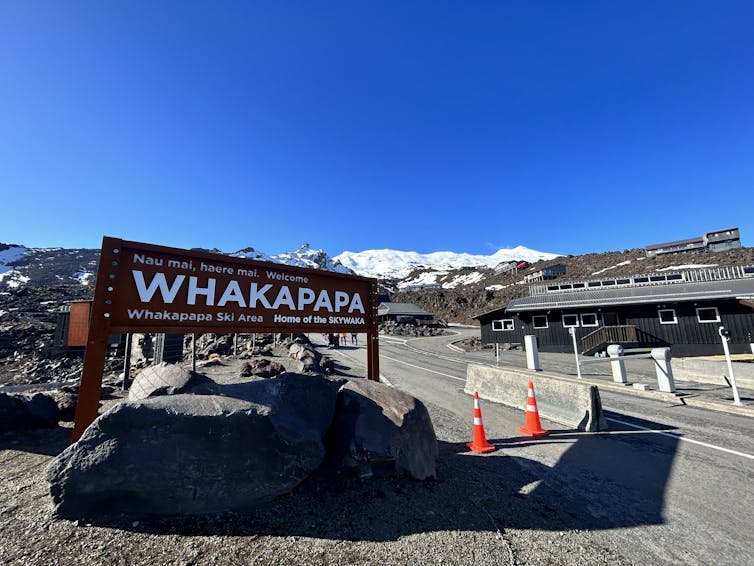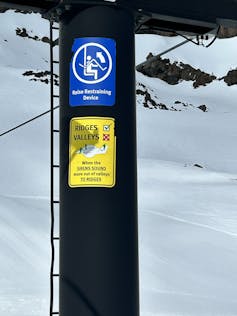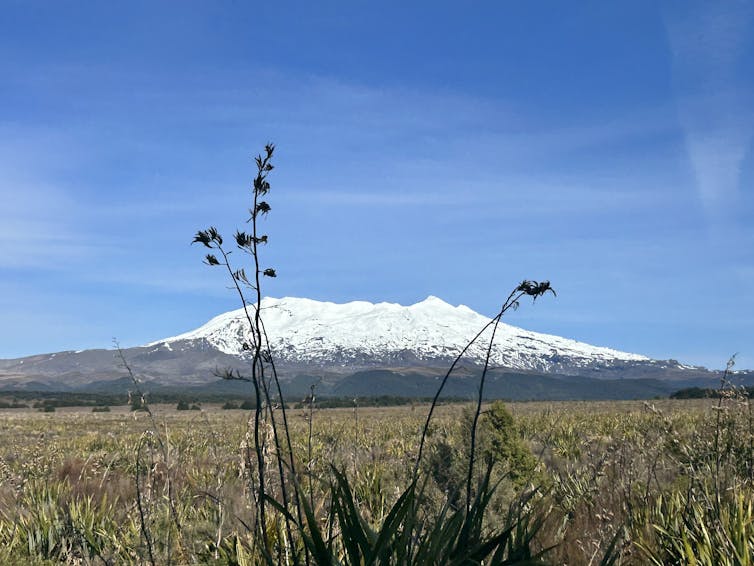As a former competitive snowboarder and instructor, and later a researcher of snow sports, I’ve been lucky to enjoy ski resorts around the world. But nothing compares to Mount Ruapehu on a good day.
Holidaying with my family last week, we fell in love with the natural terrain of both the Whakapapa and Tūroa fields – the latter enjoying the biggest snow base in the world at the time.
We were not alone. A strong winter season has seen many thousands making the most of the great conditions: 5,614 guests on Whakapapa’s busiest day of July 15, and 3,500 at Tūroa on July 28.
But this apparently positive picture makes it easy to overlook the fact that both ski fields on the North Island volcano have faced huge economic uncertainty over the past year. And one great season does not necessarily mean long-term recovery.

Sustainability amid uncertainty
After difficult pandemic years and a poor 2022 snow season, Ruapehu Alpine Lifts (RAL), which operates both Tūroa and Whakapapa, went into receivership. Ski resorts everywhere are facing an uncertain future, with climate change making seasons hard to predict.
After months of uncertainty and debate about its future, the government eventually offered a NZ$5 million lifeline for the 2023 winter season.
Read more: Ruapehu's slippery slopes: the uncertain future of snow sports in a climate emergency
Despite various longer-term rescue proposals, including a (now dropped) buyout bid by Ngāti Tūwharetoa (one of several iwi shareholders), the future of skiing and snowboarding on Mt Ruapehu remains uncertain.
Understandably, this is causing anxiety among those whose livelihoods – and favourite sporting and leisure pursuits – are at risk. Beyond those immediate concerns, however, lies the place of the maunga (mountain) itself in the historical and cultural fabric of Aotearoa New Zealand.

Cultural and geological significance
Ruapehu is much more than a place for leisure tourism. Located in the heart of the 80,000-hectare Tongariro National Park, one of three world heritage sites in New Zealand, it is a unique and special place.
In fact, Tongariro has dual world heritage status for its important Māori cultural and spiritual associations, as well as its distinctive volcanic features.
Ruapehu is particularly significant to Māori, being part of the origin story of te Ika-a-Māui (the North Island). And the ski fields are bound up in the unresolved Treaty of Waitangi claim to Tongariro National Park.
The scale of that claim, which involves cultural redress more than the return of land, puts the future of the ski fields in a much wider perspective. Added to that is the question of environmental sustainability, with ski resorts increasingly reliant on snow-making for their survival.

Behind the human activity, of course, sits Ruapehu’s great geological significance. As my nine-year-old son proudly explained upon arrival, it is a stratovolcano (also called a composite cone volcano), built up by successive layers of andesite lava and ash deposits.
Rising impressively from the ancient native forest on one side and the beautiful tussock on the other, the maunga is a striking presence in the landscape. Light and clouds constantly change its appearance as they dance off its jagged peaks.
Ruapehu is also New Zealand’s largest active volcano. There are frequent minor eruptions and more significant events every 20 to 30 years. This makes it an unusual skiing experience, to say the least, with a lahar alarm and warning system in place, and signs everywhere reminding skiers and snowboarders of the lively nature of this powerful mountain.
Read more: Rising costs of climate change threaten to make skiing a less diverse, even more exclusive sport
The people’s mountain
Over my many years researching snow sport cultures around the world, I’ve witnessed their unique social dynamics. Unlike many sports that separate people based on gender, ability and age, the slopes offer a space for shared experiences. And they can be a wonderful place for families.
But skiing and snowboarding have long been highly privileged activities. Often they are available only to those with the free time and disposable income. Travel, accommodation, lift tickets and equipment are expensive.
Perhaps unsurprisingly, the clientele of ski resorts in New Zealand and around the world have been described as “white as the snow”.
And yet I am struck by the diversity on Ruapehu. At $84 for an adult mid-week day pass, and $54 for a child day pass, it’s much more accessible than the more expensive South Island experience ($160 for an adult day pass at the Remarkables or Cardrona).
RAL also offers heavily discounted or free season passes and day passes to local iwi, schools, defence force staff and emergency services, among other groups. In contrast to the often international staff of most ski resorts, RAL workers are predominantly local, with 53% identifying as New Zealand European and 16% Māori.

Reimagining Ruapehu
While more can be done to ensure ski resorts are more inclusive and accessible for all, the various innovations by RAL to respond to the pandemic, seasonal disruption and ongoing economic uncertainty are a good start.
But its great cultural, social and geological significance makes Ruapehu a taonga (treasure) for all New Zealanders. Personally, I hope to enjoy riding with my family on Ruapehu for many years to come, but the issue is bigger than that.
With or without skiing, Ruapehu offers New Zealanders an opportunity to know mountain places as culturally significant landscapes, to learn about their histories and to reimagine their collective futures.
There is untapped potential in using the existing resort facilities as educational spaces for future generations to learn about the cultural and geographical significance of this special place.
And while relationships with the mountain (and views on its future) will vary based on people’s different cultural, social and economic perspectives, acknowledging Ruapehu’s place in the Māori experience of colonisation and dispossession must be central too.
As the economic modelling continues, and various parties seek financial sustainability for the ski fields, it’s important we don’t lose sight of this bigger picture of a remarkable maunga in the heart of te Ika-a-Māui.

